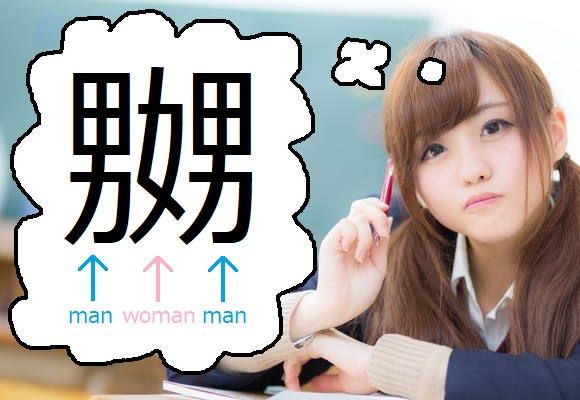
Apparently this kanji is read differently based on what country you’re from.
Japanese kanji can sometimes be read different ways depending on how they’re used, a quirk of the language that we saw before when one kanji was read five different ways in a single sentence.
Because of all these different readings, learning the language as a foreigner can be difficult. Sometimes you might not be able to read a kanji, but if you can figure out the context around it, you can guess at its reading.
▼ For example, pretend we had this kanji in English.
Its reading is “donut.”
▼ And it could be used in sentences like this.
But imagine if someone learning English saw that sentence. If they don’t know the kanji’s reading, they might guess it as “bagel” or “cookie” or “danish” or even “cupcake” (if you imagine it as looking at a cupcake from above).
And the same thing can happen in Japanese, sometimes with humorous results. Japanese Twitter user @ask82320757 shared a story about a foreigner misreading a kanji in an unexpected way.
▼ “I heard a story about a French person reading
the kanji 嬲る as mamoru (‘to protect’) and I cried.”
In case you’re not familiar with the kanji in question, which is perfectly fair since it’s a pretty rare one, let’s break it down.
▼ The kanji is read naburu and means “to tease/torment.”
It’s made up of three smaller kanji: two “men” and one “woman.”
So the kanji that basically has one woman surrounded by two men means “to tease/torment.” That’s unfortunate, but the ancient scribes came up with all sorts of weird kanji, so we can’t really hold it against them.
What makes this funny is that the French learner of Japanese read the kanji as mamoru, meaning “to protect.” What probably happened was, he looked at the kanji, saw two men with one woman, assumed it meant “to protect,” and read it as such.
For Japanese people, it’s such a pure-hearted mistake that they couldn’t help but fall in love with the story.
“What a wonderful person, to read the kanji like that.”
“The men kanji will protect the woman kanji!”
“So chivalrous.”
“I wonder what his face looked like when he found out the real reading.”
“Can we appeal to have its reading changed?”
“The cultural difference is apparent.”
Other netizens shared their own, similar experiences:
“That’s pretty different from an American I know who read it as ‘bitch’ haha.”
“I have to tell this to my German friend who immediately read the kanji 如 as manko without any hesitation.”
▼ They’re referring to this kanji, which can be read many different ways,
but definitely NOT as manko (considered a vulgar word in Japanese).
And for those curious about what the opposite of the naburu kanji would be (that is, two women and one man), another netizen cleared that up:
“When I found out that 嫐る and 嬲る are read the same as naburu, I was very excited.”
▼ Yup, the two kanji are read exactly the same way.
So if you ever have to write naburu, feel free to use whichever you prefer.
We’re just happy that, despite the ambiguity of the kanji itself, at least it makes sense when you learning its actual meaning — pretty much anyone can empathize with being the odd one out in a group and being “teased/tormented” because of it. And that’s a lot more than we can say for some other Japanese words that make no sense… even after you learning their meanings.
Source: Twitter/@ask82320757 via Hachima Kiko
Top image: PAKUTASO (edited by SoraNews24)
Insert images: SoraNews24